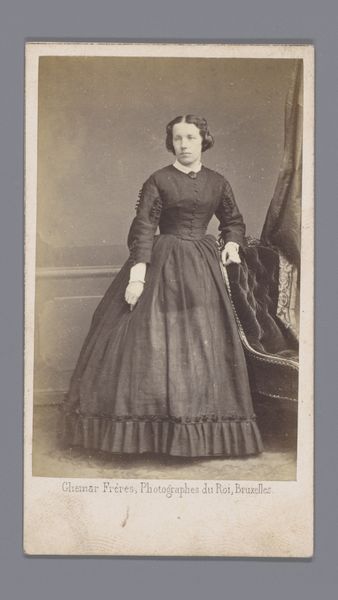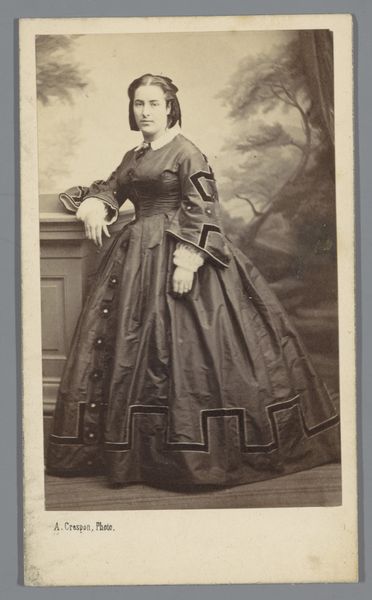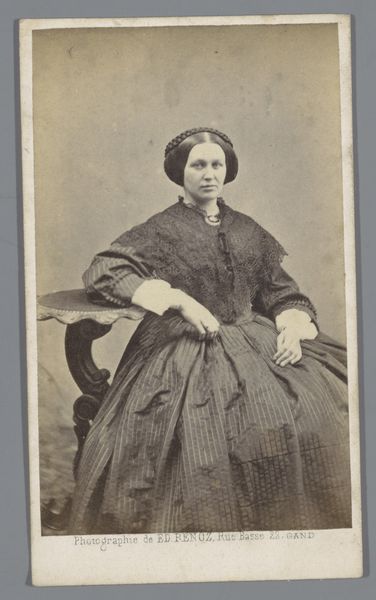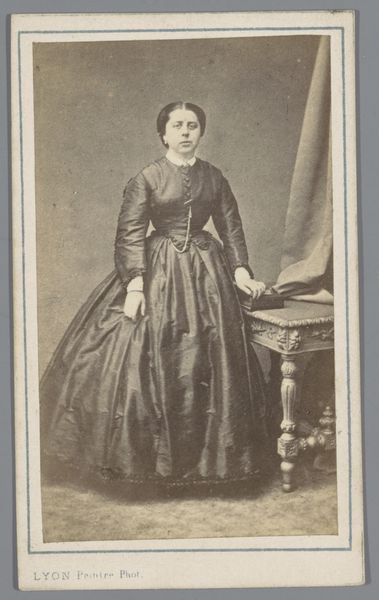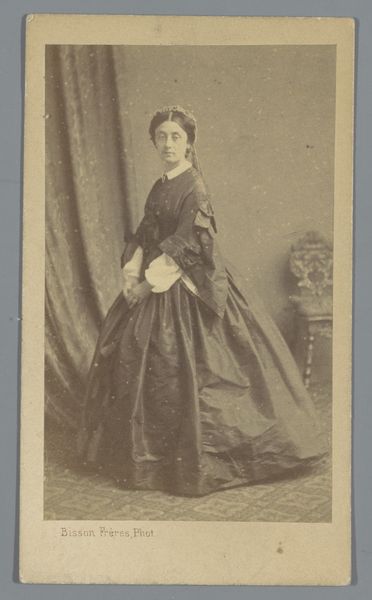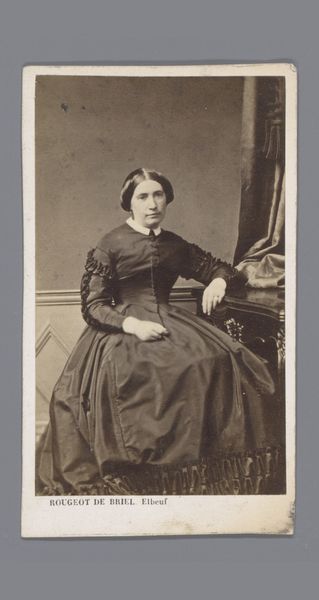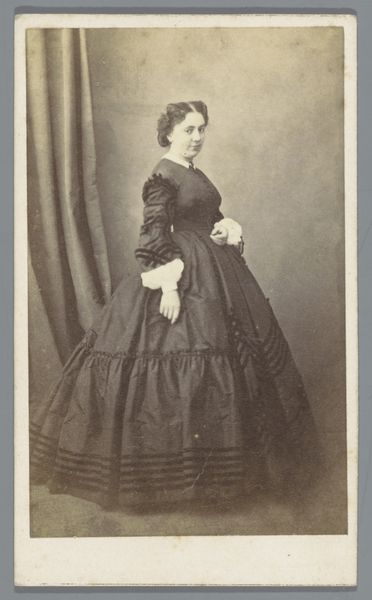
Studioportret van een staande dame in een lange jurk naast een tafel c. 1863 - 1866
0:00
0:00
photography
#
portrait
#
charcoal drawing
#
photography
#
charcoal
#
realism
Dimensions: height 80 mm, width 54 mm, height 296 mm, width 225 mm
Copyright: Rijks Museum: Open Domain
Editor: Here we have a portrait titled "Studioportret van een staande dame in een lange jurk naast een tafel," by Carl Rensing, sometime between 1863 and 1866. It's currently housed in the Rijksmuseum. I'm immediately struck by the sheen of the woman’s dress, and how that fabric contrasts with the dark backdrop. What draws your attention most in this piece? Curator: I find myself focused on the dress itself. Its production – where were these materials sourced? What kind of labor went into crafting such a garment, with those intricate embellishments? The table too. These objects represent access to specific economic structures. Editor: So you're looking at the material realities reflected in the photograph. It is fascinating to consider where all the materials came from, and the process from raw material to finished object. Do you think the photographic process is a similar form of production here, rather than the artist being the key element? Curator: Precisely. Early photography was a complex and costly undertaking. Consider the chemistry involved, the equipment required, the specialist knowledge. The person in front of the lens becomes, in a way, another raw material shaped by social and technological forces. What does her static, composed, form, standing next to a decorative table tells us about the labor practices from the era, for example? Editor: That really changes how I see this portrait! I hadn't thought about it in terms of these interwoven manufacturing processes. Now the image reads very differently for me. Thanks! Curator: My pleasure. Recognizing art's reliance on labor and material offers valuable insights into understanding both art and society.
Comments
No comments
Be the first to comment and join the conversation on the ultimate creative platform.

